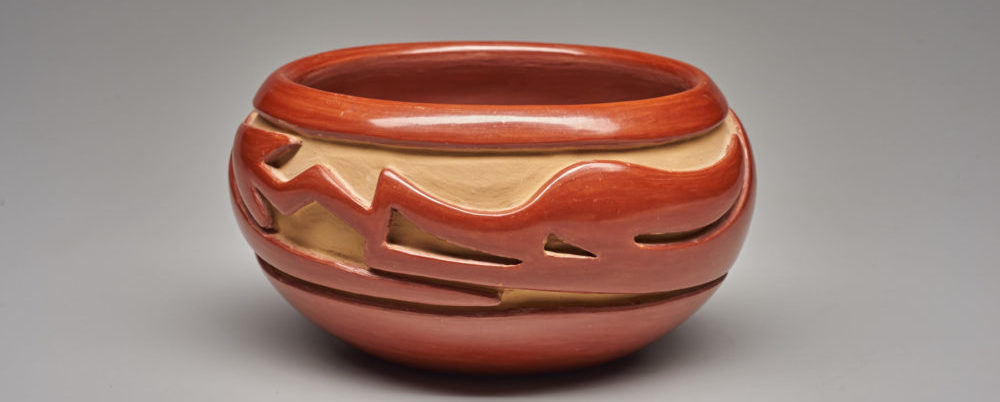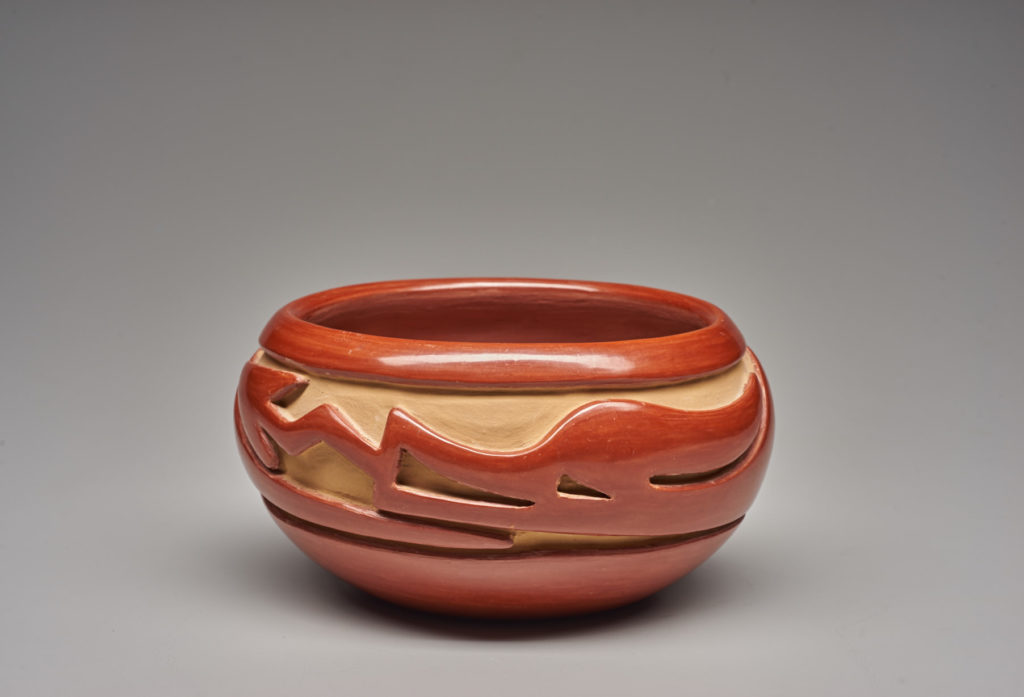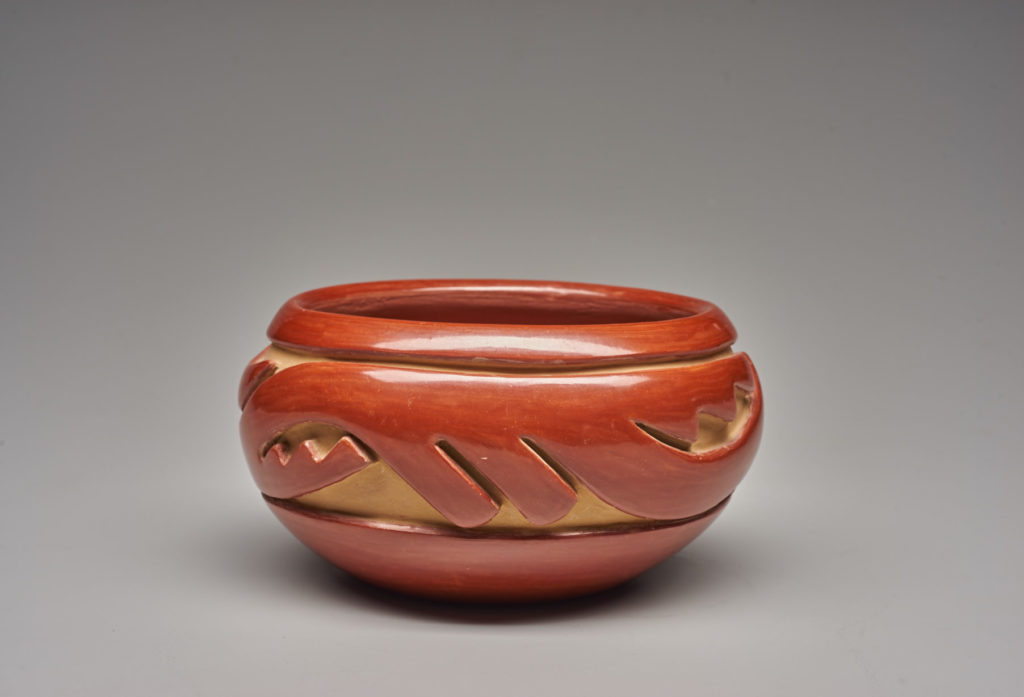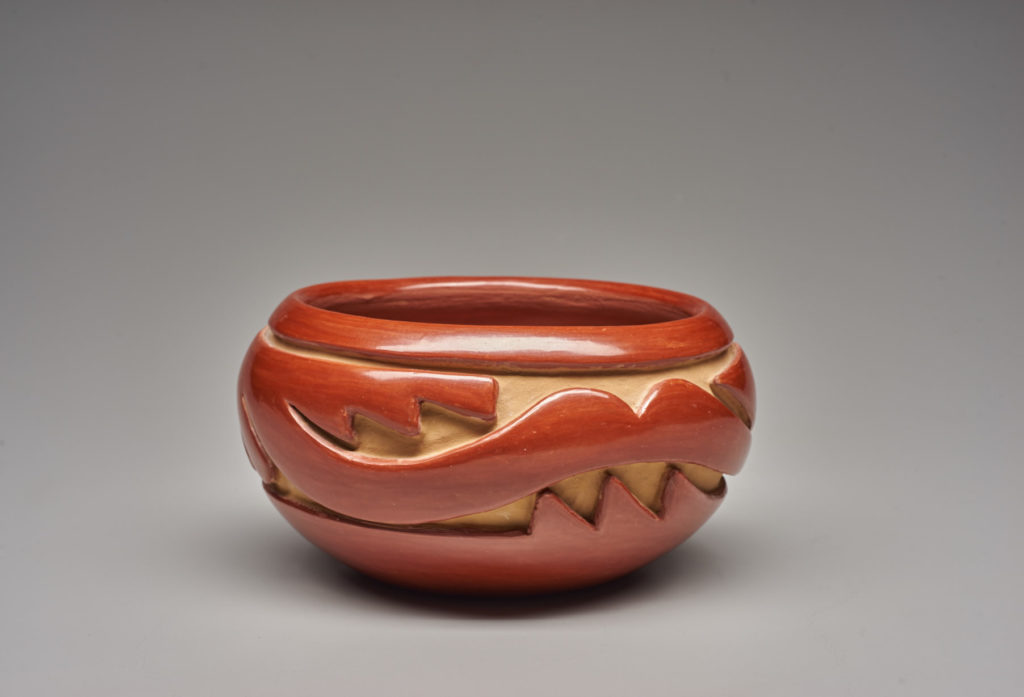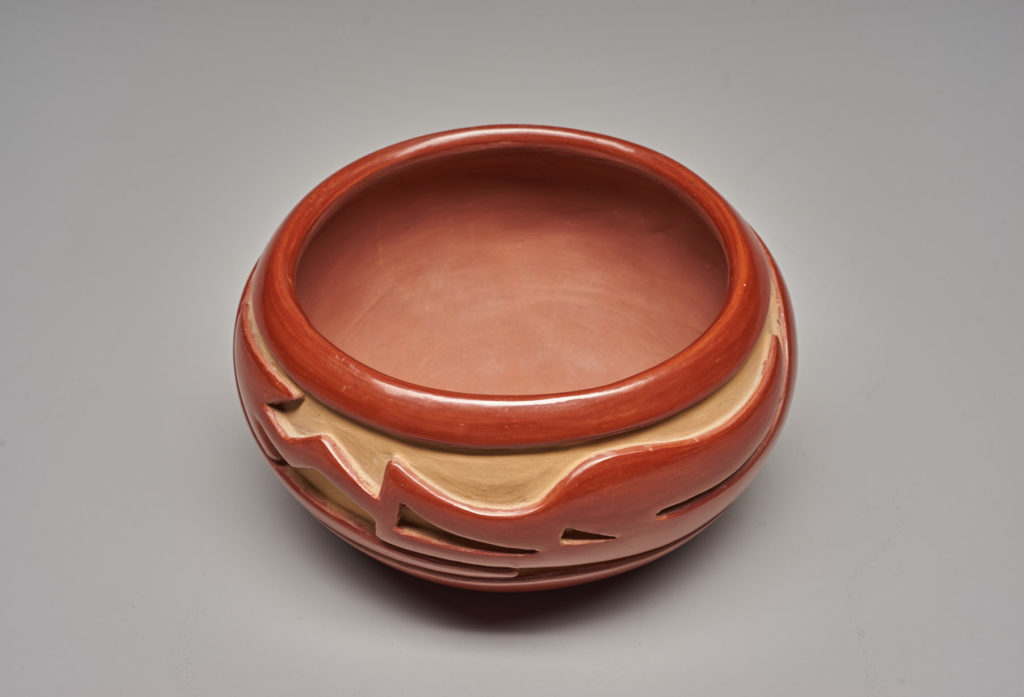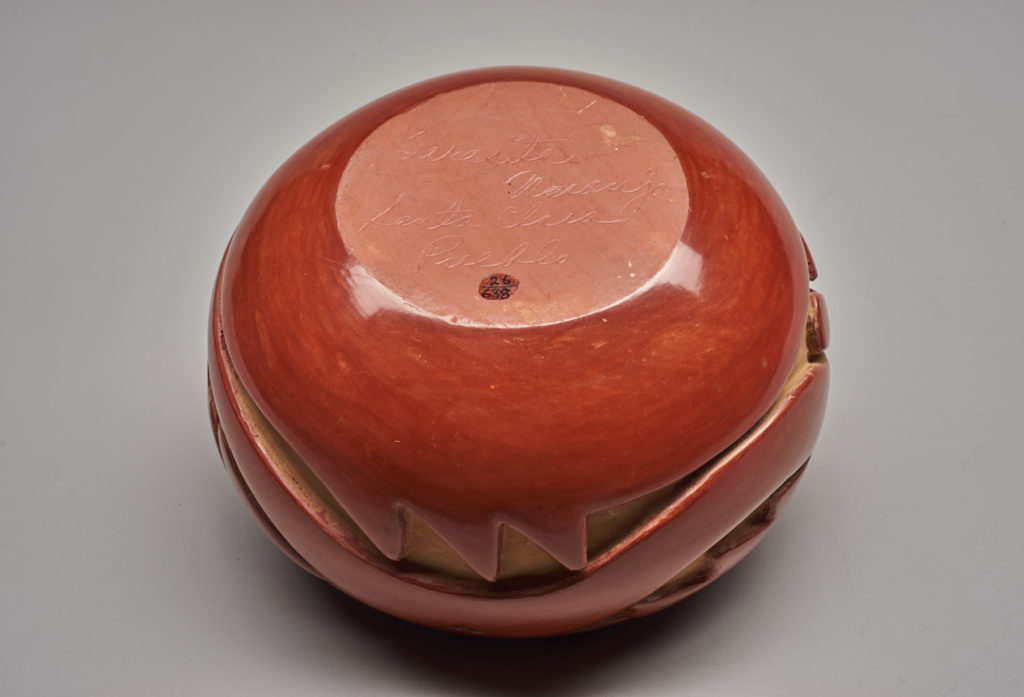Terestia Naranjo (Apple Blossom – Bay-Po-Vi) was born in the Santa Clara Pueblo of New Mexico in 1919 and died at the age of 80 in 1999. Her death is considered a great loss to the creation and collection of Pueblo pottery. She is considered one of the finest Pueblo potters of the 20th century. Like many Pueblo potters, Teresita came from a long line of prolific artists. Her grandmother was Sarafina Tafoya and her aunt was Margaret Tafoya, both of whom are considered matriarchs of Santa Clara pottery. This piece was gifted to the museum by Mrs. Lewis Humason, who purchased it directly from the artist, whom she was close friends with.
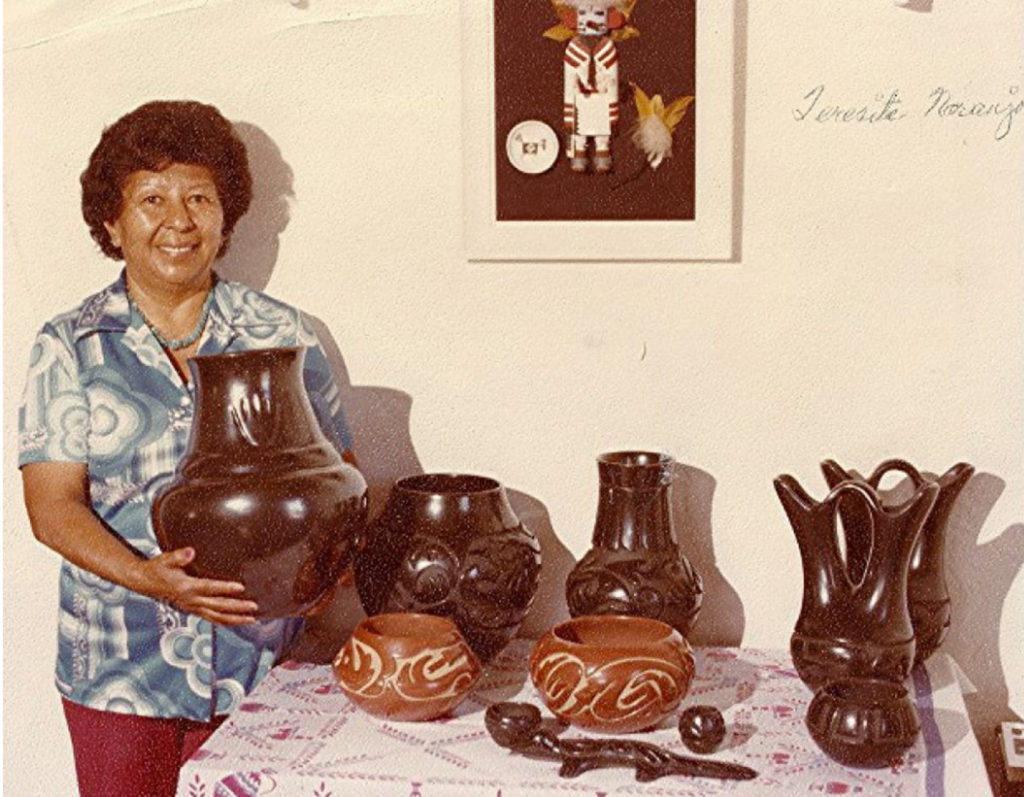
Teresita Naranjo. Image courtesy of King Galleries.
Historically, Santa Clara pottery has consisted of redware and blackware made of clay. It was in the later 1920s that Sarafina Gutierrez Tafoya (Teresita’s grandmother) and her daughter Margaret Tafoya (Teresita’s aunt) developed deep carved blackware, which is synonymous with modern Santa Clara pottery. It was these two women who also created the signature bear claw motif that is featured on many Santa Clara pots even today. Santa Clara potters are also known for creating massive vessels in comparison with the styles of other Pueblo potters. Today, Santa Clara potters continue to modify tradition and create new and innovative styles and techniques to not only meet consumer demands, but to explore their own styles as individual artists. Teresita Naranjo is well known for being one of the most innovative Santa Clara potters with her applied techniques of carving outside of traditional linear band designs.
Pictured here is a typical redware Santa Clara jar featuring the bear paw motif by Lu Ann Tafoya that currently resides in the collection of the National Museum of Women in the Arts.
The aspect of water is crucial to the Pueblo people and can be seen in many motifs of their pottery. Along with the bear paw motif, which stems from a Santa Clara legend of the bear leading the Pueblo people to water in a time of drought, Teresita favored Avanyu, which is Tewa (the language spoken by certain Pueblos) for water serpent. Avanyu is a Tewa deity and guardian of water. He is the one who lives in the water below the earth and who carries the Pueblo people through the waters of change. The jar from our collection currently on display features the Avanyu motif in Teresita’s signature deep carved technique.
You can see some of Teresita’s other works featuring Avanyu here, within the collections of the Smithsonian National Museum of the American Indian.
The process of making pottery is a greatly detailed one that incorporates ancient techniques and traditions with some modern techniques. First clay must be collected, and certain artists have specific areas in which they choose to collect their clay. The clay is then tempered, traditionally using a white pumice in the Santa Clara Pueblo. This strengthens the clay so that it does not crack during the firing process. Once the clay is ready, the piece is created using the traditional technique of hand building the pottery with various coils, and then smoothing and scraping the inner and outer surfaces. The piece is then coated with slip, a mixture of clay and water, before being polished or decorated.
The most intensive part of this process is creating the smooth, polished sheen that makes Santa Clara pieces so distinctive. This is achieved through the use of smooth stones against the surface of the piece. Even today, many modern Santa Clara pots are fired outdoors in traditional fire pits.
Embed from Getty Images
UNITED STATES – CIRCA 1905:
Two women, probably Tewa, tending a fire pit, Santa Clara Pueblo, New Mexico.
(Photo by Buyenlarge/Getty Images)
For both red and blackware pieces, the clay is the same, it is the firing process that determines if the piece will be red or black when finished. Pottery is placed in a metal container with air holes. A fire is then built up around it. If the artist wishes to make a piece of blackware, several hours into the firing process the fire is smothered, often with manure. This creates an oxidizing effect which gives the piece its characteristic black color. If the artist is making a redware piece, the fire is not smothered and the clay retains its red color.
Contemporary Santa Clara potter, Jody Naranjo, talks about this process below along with her heritage and the traditions of Santa Clara pottery.
